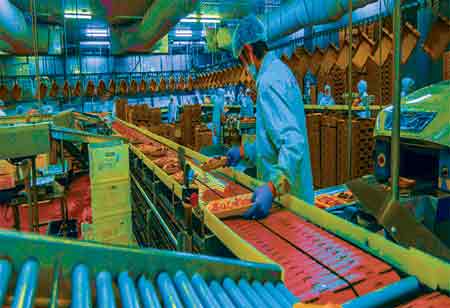THANK YOU FOR SUBSCRIBING
Be first to read the latest tech news, Industry Leader's Insights, and CIO interviews of medium and large enterprises exclusively from Food and Beverage Tech Review
Possibilities for Asia-Pacific Leadership in Managing Waste
Most communities, up until recently, either disposed of waste materials in abandoned landscapes or, at best, put them in landfills.

By
Food and Beverages Tech Review | Thursday, December 26, 2024
Stay ahead of the industry with exclusive feature stories on the top companies, expert insights and the latest news delivered straight to your inbox. Subscribe today.
Both the public and private sectors should work to solve the waste management issue. To reverse the pollution caused by plastic packaging, the public and the government should cooperate.
FREMONT, CA: Most communities, up until recently, either disposed of waste materials in abandoned landscapes or, at best, put them in landfills. There is a growing understanding that the conventional, linear model of garbage is unsustainable in a sustainable society as the amount of waste increases globally. Solutions that could aid in switching from that linear strategy to a circular model of use have recently come to light. The prevalence of plastic pollution has made it a point of concern, even though each sort of waste material poses its own unique set of problems.
Throughout the past few years, the Asia-Pacific (APAC) area generated 52 per cent of the world's total 390.7Mt of plastics. APAC can be a leader in the shift to a circular economy for plastic packaging as it accounts for a huge portion of global plastic output overall and is home to some of the biggest plastic producers. The production and consumption data for plastics by nation are noteworthy. With a 32 per cent share of the world's output of plastic materials, China is the world's largest producer of plastics. With Japan accounting for 3 per cent of the world's plastic production and the rest of Asia providing 17 per cent of it, other Asian nations were also big producers of plastic.
The Asia Pacific region has the potential to become a global leader in addressing the plastic waste crisis and creating a circular economy for plastics. One of the key opportunities for Asia Pacific leadership is in developing and implementing comprehensive waste management policies and regulations. Governments in the region can leverage their power to set targets, create incentives, and enforce regulations that promote waste reduction, recycling, and reuse.
Another opportunity for Asia Pacific leadership is in promoting circular business models that reduce the use of virgin plastics and increase the use of recycled materials. The region is the centre of many innovative companies that are developing new technologies and business models to create a circular economy for plastics. In India, certain start-up firms have developed biodegradable and compostable alternatives to plastic bags made from natural starch and vegetable oils. In China, the e-commerce giant Alibaba Group Holding Limited has launched a pilot program that uses reusable containers for food deliveries.
Finally, public awareness and education are critical to creating a sustainable and circular economy for plastics. Governments, civil society, and the private sector can work together to raise public awareness about the impacts of plastic waste and the benefits of waste reduction, recycling, and reuse. For example, the United Nations Environment Programme's Clean Seas campaign is raising awareness about plastic pollution in the Asia Pacific region and mobilising action to reduce it.
The plastic waste crisis presents a significant challenge for the Asia Pacific region, but also an opportunity for leadership, innovation, and collaboration. By developing and implementing comprehensive waste management policies and regulations, promoting circular business models, and raising public awareness and education, the region can become a global leader in creating a sustainable and circular economy for plastics.
I agree We use cookies on this website to enhance your user experience. By clicking any link on this page you are giving your consent for us to set cookies. More info







